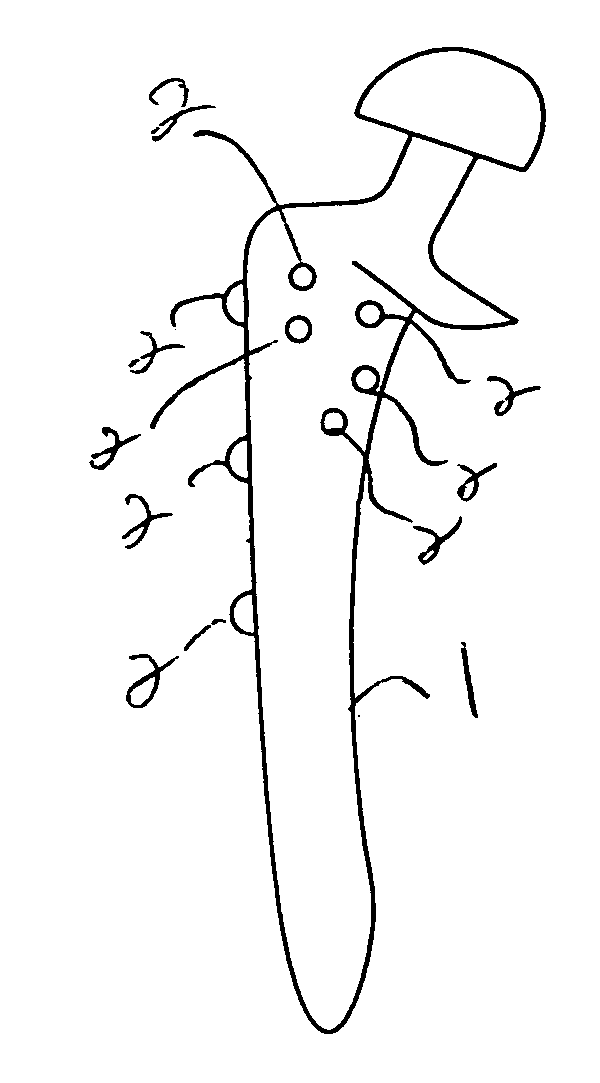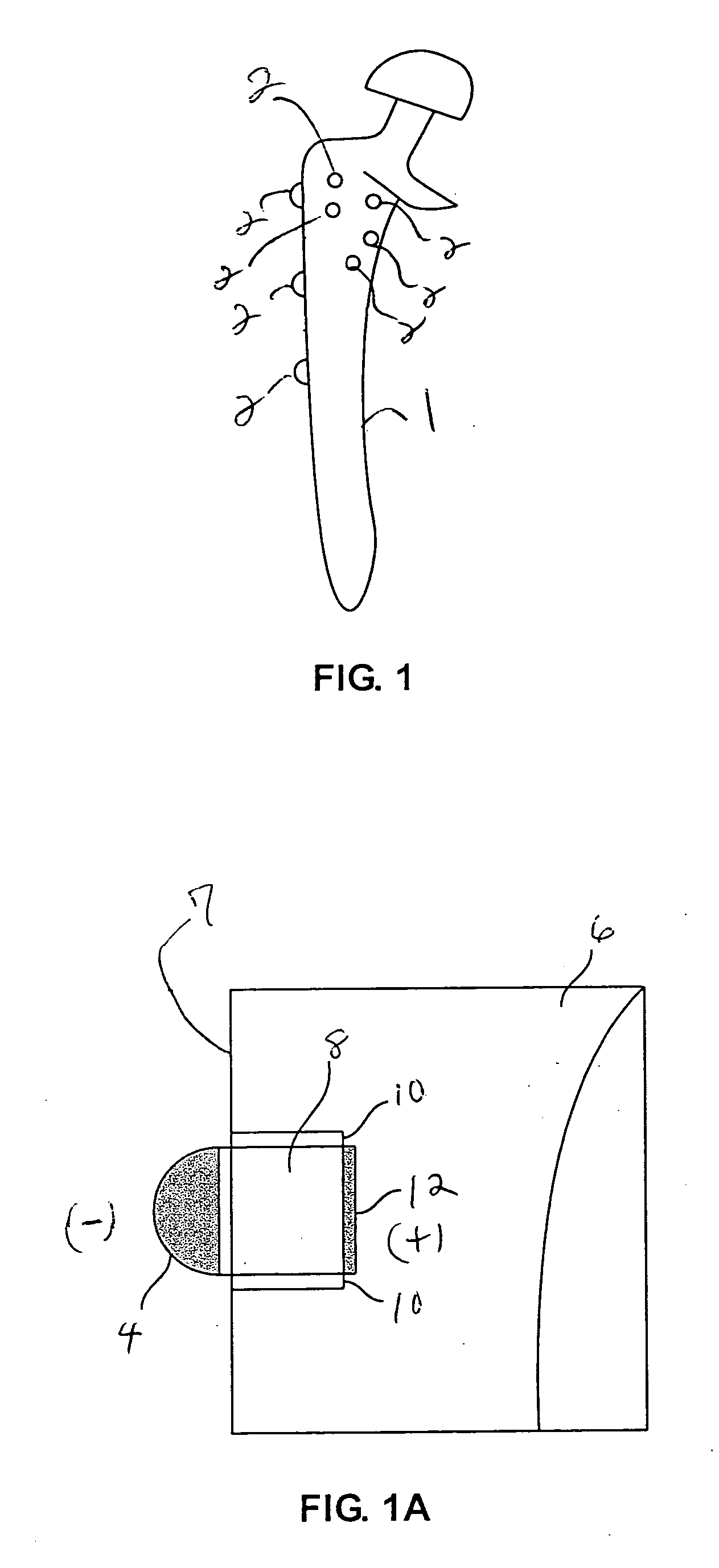Implanted prosthetic device
a prosthetic device and implant technology, applied in the field of implantable orthopedic devices, can solve the problems of high failure rate of implant devices, mechanical integration, implant failure, etc., and achieve the effect of reducing the tim
- Summary
- Abstract
- Description
- Claims
- Application Information
AI Technical Summary
Benefits of technology
Problems solved by technology
Method used
Image
Examples
Embodiment Construction
[0027] The present invention is an improved implantable orthopedic device that is intended to provide accelerated or enhanced bone formation around the implant as compared to the normal bone growth that occurs in response to the implantation of artificial materials in the body. The particular implants that may be adapted for use in connection with the invention include virtually all implantable devices such as dental implants, hip joints, knee joints, finger joints, bone fixation devices, spinal implants, intramedullary rods, intramedullary nails, and the like, whether for human or veterinary applications.
[0028] The piezoelectric element that is used in the invention may be made of any non-toxic, biocompatible material that will generate an amount of electric current that will stimulate bone growth under the normal stress that bone structure receives due to walking, running, standing, chewing and the like. The current that is generated by the piezoelectric element should be between...
PUM
| Property | Measurement | Unit |
|---|---|---|
| Distance | aaaaa | aaaaa |
| Distance | aaaaa | aaaaa |
| Piezoelectricity | aaaaa | aaaaa |
Abstract
Description
Claims
Application Information
 Login to View More
Login to View More - R&D
- Intellectual Property
- Life Sciences
- Materials
- Tech Scout
- Unparalleled Data Quality
- Higher Quality Content
- 60% Fewer Hallucinations
Browse by: Latest US Patents, China's latest patents, Technical Efficacy Thesaurus, Application Domain, Technology Topic, Popular Technical Reports.
© 2025 PatSnap. All rights reserved.Legal|Privacy policy|Modern Slavery Act Transparency Statement|Sitemap|About US| Contact US: help@patsnap.com



